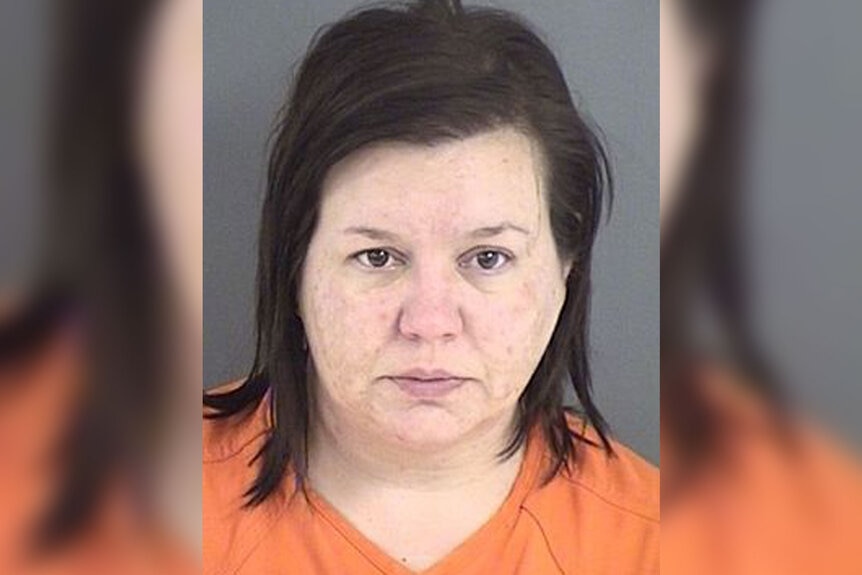Shocked By The 'Angel Of Death' On 'Fargo'? These Real-Life Deadly Nurses Chose To Kill, Not Heal
While "Angel of Death" Oraetta Mayflower on "Fargo" is a fictional character, Orville Lynn Majors is a real-life killer nurse who shares the same eerie moniker — and he's not the only murderous hospital worker out there.

Warning: "Fargo"Spoilers Ahead
Nurses are always here to help patients live ... right? Er, not exactly.
The fourth season of the FX television series “Fargo" introduced viewers to Oraetta Mayflower, a cheery nurse who describes herself as an "angel of mercy." In reality, though, she’s aptly dubbed the “Angel of Death” for her sadistic tendencies. Mayflower, played by actor Jessie Buckley, is actually a serial killer who preys on the patients she is supposed to help heal.
While “Fargo” is obviously a work of fiction, Mayflower’s character isn’t a total fantasy. There have indeed been real-life nurses who victimized patients and abused the trust placed in them. Oxygen’s “License To Kill,” a show about medical professionals who put their clients in harm’s way or worse, has chronicled several real cases of nurses who used their positions as healers to act out their homicidal impulses (Plus, it's streaming now on Oxygen.com!)
Here's a nurse who, like Mayflower, has been dubbed the “Angel of Death” (or sometimes "Death Angel"). Orville Lynn Majors took a job at Vermillion County Hospital in Clinton, Indiana in the early 1990s where he was a valued and popular nurse, according to a 1999 issue of PEOPLE. But patients soon began dying on his watch.
Majors oversaw a small, four-bed ICU unit at the hospital, which experienced a suspicious spike in deaths in 1994. The mortality rate jumped nearly four times the previous year's level. In fact, 100 of the 351 people admitted to the ICU died that year, according to court documents. Over the previous four years, an average of only 27 patients a year who were admitted to the unit died.
The reason for the uptick? Majors was injecting some of them with potassium chloride or epinephrine, which can be lethal in the wrong dosages. He was convicted of six deaths in 1999 and was sentenced to 360 years in prison.
His case has been featured on "License to Kill" in an episode entitled ”Lethal Injections.”
Kimberly Clark Saenz preyed on patients while they were receiving dialysis treatments meant to save them from kidney failure. Instead, she doomed them.
In the spring of 2008, the DaVita Lufkin Dialysis Center in Texas — where Saenz worked — saw a mysterious uptick in patients getting ill and going into cardiac arrest during these treatments, according to a "License to Kill" episode on the case, entitled ”Deadly Dialysis.” Many of these cardiac events ended in death. Saenz was arrested later that year and indicted in 2009 for the five deaths that occurred at the center in April 2008.
A jury found her guilty on three counts of aggravated assault and of capital murder in count six of her indictment, which meant jurors believed she killed at least two of the victims, the Daily Sentinel reported at the time. She was sentenced to life in prison with no possibility of parole.
Donald Harvey was a prolific American serial killer who murdered at least 37 people while working as an orderly and nurse's aide. While employed at a number of hospitals between 1975 to 1985, he killed scores of patients through a variety of methods: asphyxiating them, turning off their respirators, injecting air into their veins, and poisoning them with arsenic, cyanide, and rat poison, according to a 1987 Washington Post report.
Harvey pleaded guilty in 1987 to killing 37 people at hospitals in Ohio and Kentucky, the Associated Press reported in 2017. Later, he claimed to have killed 18 patients when he worked at the Veterans Administration Medical Center in Ohio. As for motive, he claimed it was for mercy, that he was trying to end their suffering. Prosecutors, however, argued that he killed simply because he liked it.
He was beaten to death in 2017 in his cell as he was serving multiple life sentences.
Harvey's case is profiled on "License to Kill" in an episode calling "Killing Everything."
Oliver O'Quinn was a nurse anesthetist at the surgical intensive care unit in the University of Florida Health Shands Hospital when he became obsessed with University of Florida student Michelle Herndon. O'Quinn was sharing a house with one of Herndon's good friends and became close with her after he started giving her medication to help her with a persistent migraine issue she was struggling with. That help ultimately turned deadly, however, when he injected her with a fatal dose of propofol, a fast-acting anesthetic, at her home in 2005, the Gainesville Sun reported in 2008.
Afterward, he fled to Ireland where he applied to work as a nurse. He then moved to Dakar, Senegal before he was arrested and extradited back to Florida in 2006.
The former nurse was sentenced to life in prison without parole in 2008 for the first-degree murder of Herndon.
The case has been featured on "License to Kill" in an episode entitled "Death By Injection."
Lovers Cathy Wood and Gwendolyn Graham worked together as nursing aides at Alpine Manor, a nursing home located outside of Grand Rapids, Michigan, in the 1980s. Together, they murdered five patients, who ranged in age from 60 to 98, WSOC-TV reported earlier this year. All of their victims had either dementia or Alzheimer’s disease. Wood said the murders were carried out as a twisted way to strengthen the couple's bonds of love, according to a Los Angeles Times story from 1989.
A "License to Kill" episode dedicated to their case, called "A Match Made in Hell," revealed that the deadly pair would often have sex after killing their victims. They had a volatile relationship and even turned on each other as they were being investigated.
In the end, Graham was found guilty of five counts of first-degree murder and one count of conspiracy to murder. She was sentenced to life in prison. Woods was sentenced to 20 to 40 years in prison for one count of second-degree murder and one count of conspiracy to murder. She was released in January.
Brian Rosenfeld is yet another serial killer nurse who bounced from nursing home to nursing home, bringing with him curious upticks in death rates. The Florida man pleaded guilty in 1992 to killing three elderly patients by overdose, including one 80-year-old woman who was found to have enough of the antipsychotic drug Mellaril in her system to kill an elephant, the Associated Press reported at the time. However, Rosenfeld allegedly boasted to his former cellmate that he'd killed even more — 23 patients in total.
Whether his claims of nearly two dozen victims is true isn't clear. What is known is that Rosenfeld worked in more than 16 nursing homes over a 10-year span and was fired from 14 nursing homes within a five-year span. Florida Assistant State Attorney Fred Schaub told a judge in 1992 that of the 201 deaths that occurred during Rosenfeld's stints at various nursing homes, 170 bodies were cremated before any suspicions about their manner of death were raised.
Some of his past employers did note that other staff members called him sadistic for his mistreatment of patients. They claimed he threw water on one patient and bent other patients’ fingers back until they screamed in pain, according to an episode of "License to Kill" called "Killer Caregiver."
He was given three life sentences in 1992.
Bobbie Sue Dudley was a serial killing nurse who pleaded guilty in 1988 to killing four patients at the St. Petersburg, Florida nursing home where she worked, UPI reported in 1988. All were murdered within days of each other. Of her four victims, two were strangled and two were injected with fatal overdoses of insulin. A fifth patient was also injected with insulin, but was rushed to a hospital and was saved.
But could there have been even more victims? In all, seven patients at the home died between Nov. 13 and Nov. 23, and all the deaths occurred during the 11 p.m. to 7 a.m. shift or close to that shift’s change.
Dudley never gave an explanation for the killings. She reportedly had a history of mental illness, and she was diagnosed with Munchausen by proxy syndrome, the Orlando Sentinel reported in 1986. She was sentenced to 65 years in prison in 1988.
Dudley's case was featured on a "License to Kill" in an episode called "Cosmetic Killer."

































